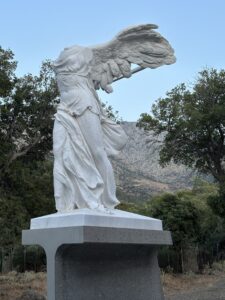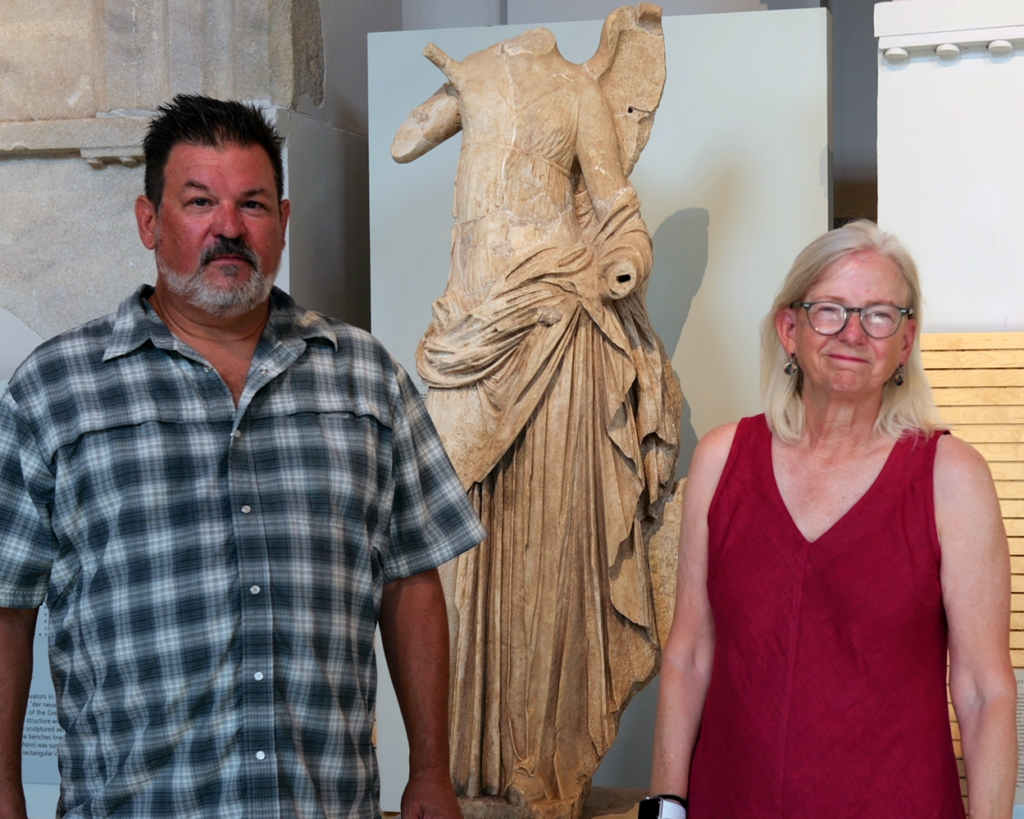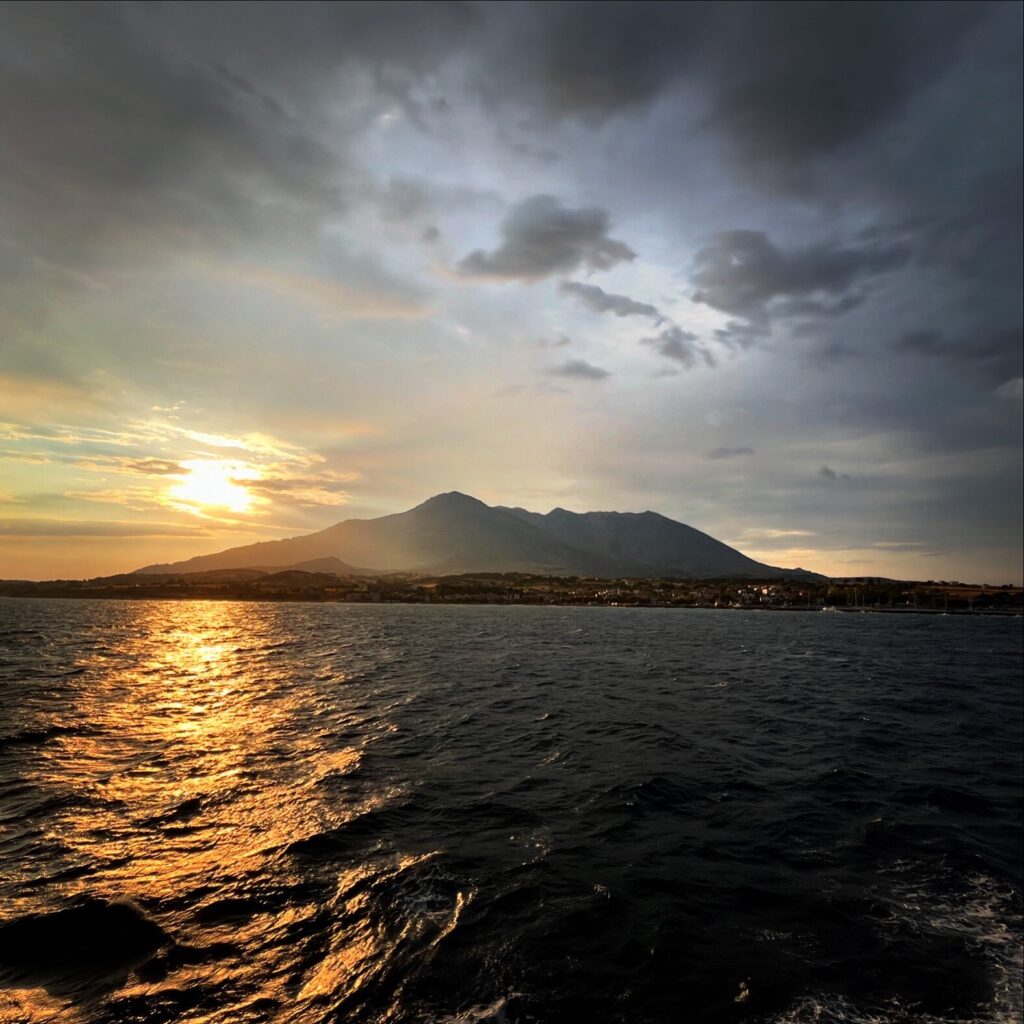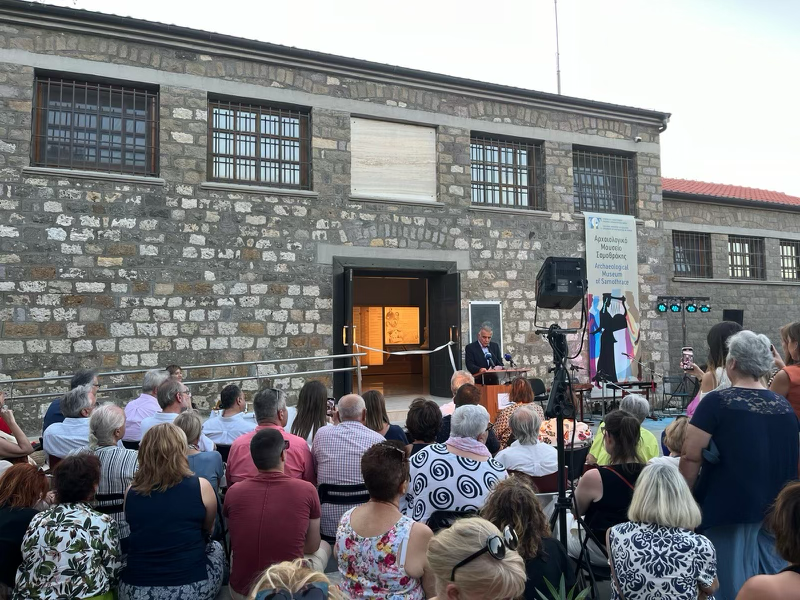Samothrace, a small, rugged, and mountainous Greek island in the northern Aegean Sea, is making a comeback. Approximately 2,100 people live on the small island, including – for almost two decades of summers – ECDS geographer Michael Page who has been working there with the American Excavations Samothrace (AES) team. The island is also home to the Winged Victory of Samothrace statue (spotlighted with an artistic replica during the closing ceremony of the 2024 Olympics in Paris) and the Sanctuary of the Great Gods. The Archaeology Museum of Samothrace highlights the Winged Victory and the Sanctuary and is now fully open to the public for the first time in over a decade.

The Archaeology Museum of Samothrace, opened initially during the 1950’s and revamped during 2014-2019, is the first museum of its kind in Thrace. Its permanent exhibit, spread across five halls, features various archeological sites from the island and provides a significant focus on the Sanctuary of the Great Gods.
Dr. Bonna D. Wescoat, Director of the American School of Classical Studies at Athens and Samuel Candler Dobbs Professor of Art History at Emory University, has worked at the site for several decades. Furthermore, Dr. Wescoat has been the driving force of the project, earning the prestigious title Director of Excavations, Sanctuary of the Great Gods, Samothrace. Under her skillful leadership are several senior team leaders including Michael Page, who is not only a Professional Geographer with the ECDS Digital Visualization Laboratory but is also Assistant Teaching Professor in the Department of Environmental Sciences at Emory University. Michael oversees the survey, geospatial, and mapping team.
During his earliest visits, Michael took topographic and architecture measurements of the area using survey instruments. These measurements formed the foundation of the team’s 3D models, which were created as early as 2010 and were created prior to drones and LiDAR (Light Detection and Ranging).

Greek Minister of Culture Lina Mendoni led the ceremony that officially reopened the Archaeology Museum this summer. The AES team, composed of faculty and students from several institutions, attended the historic reopening in Samothrace. Michael stated he was grateful to see how the many summers of excavation, conservation, and geospatial/architectural analysis (undertaken by students and academics all across the globe) have come together. More importantly to Michael, the museum’s reopening symbolizes new opportunities for tourists and visitors to boost the local economy, which relies heavily on tourism. You can read more about the historic reopening here.
In 2020, ECDS helped create a 3D modeling video of the Archaeological Museum of Samothrace’s Hall A. Hall A features reconstructed architectural features from three of the Sanctuary of the Great Gods’ major buildings—the Rotunda of Arsinoe II, the Hieron, and the Altar Court. In addition to these buildings, the video features spatially accurate photos and models of the entire sanctuary and its surrounding landscape rendered by ECDS’s Ian Burr, John Halbert, and Michael Page. With the museum now open, visitors can watch the video and understand the importance of the Sanctuary, and imagine what it would have been like to visit the site before its unfortunate demise.
Notably, ECDS’ contributions to this project— Michael’s aerial photography and videos of other areas on Samothrace—are featured throughout the entire Archaeological Museum’s exhibits. The project’s future promises an exhibit in Athens opening in February 2025. The exhibit will highlight the history of visualizing the Sanctuary of the Great Gods from the 1960s to the present day. Additionally, the exhibit will include current technology utilized by ECDS, such as drone-made 3D imaging of Samothrace, panoramic photography, and high-resolution elevation data.

